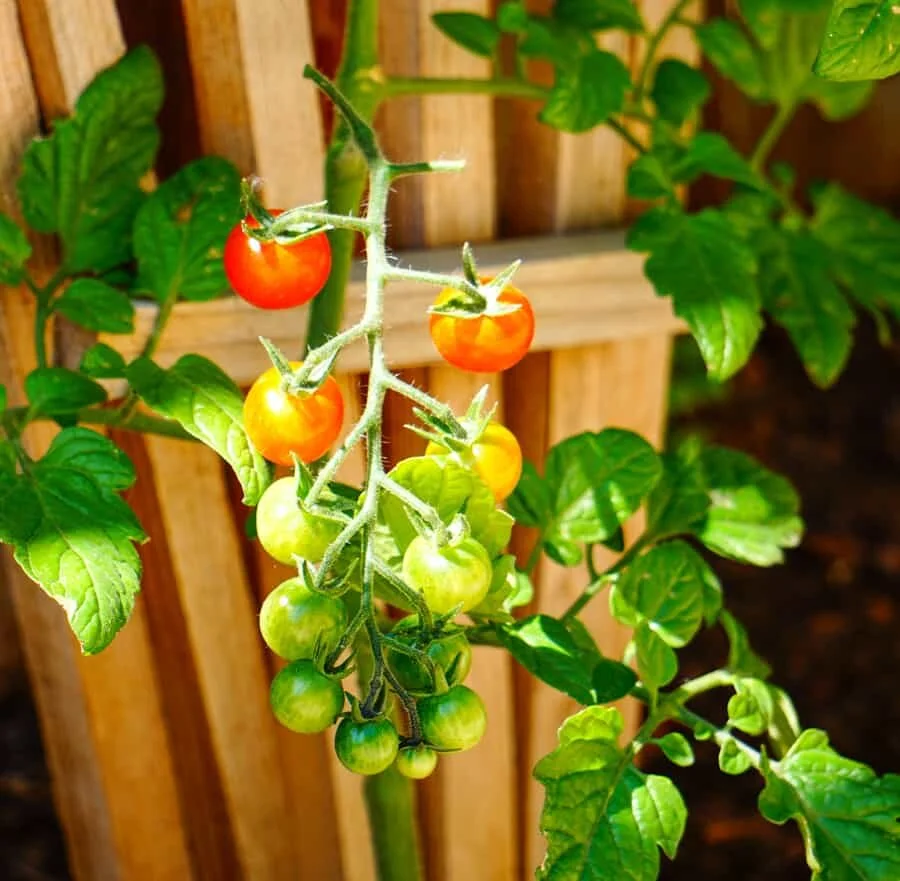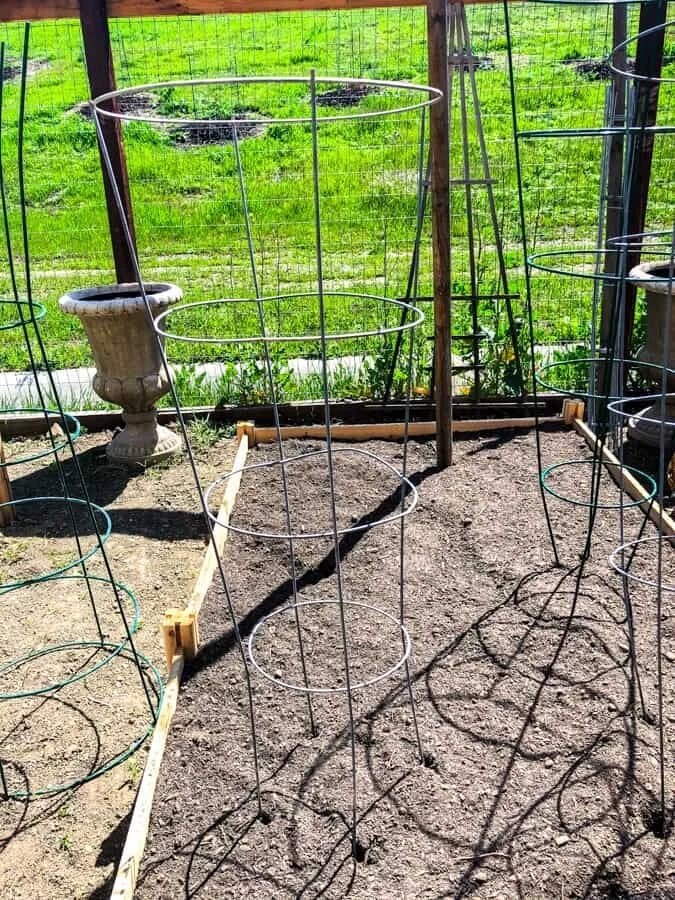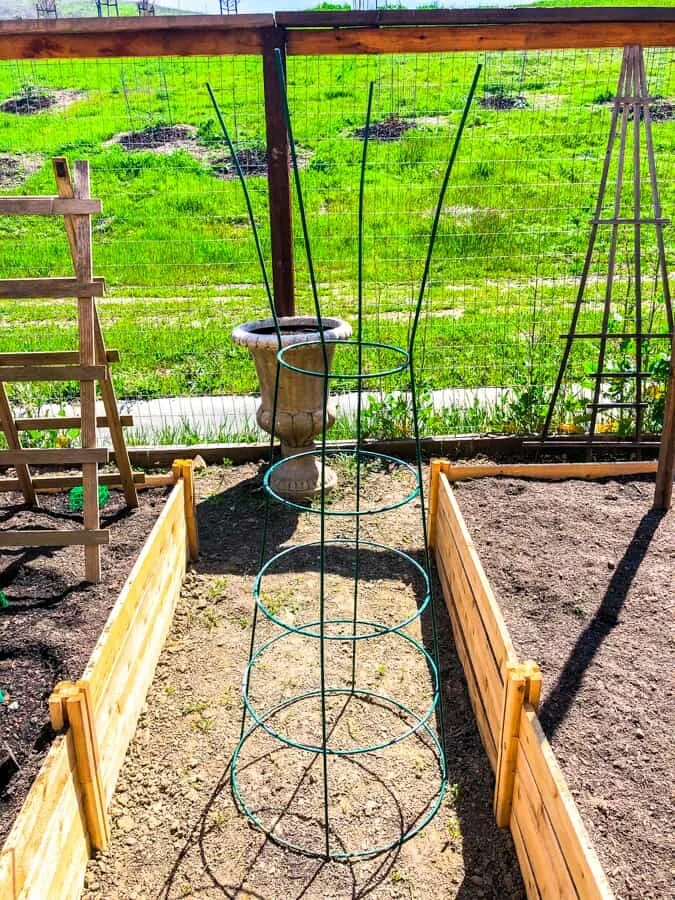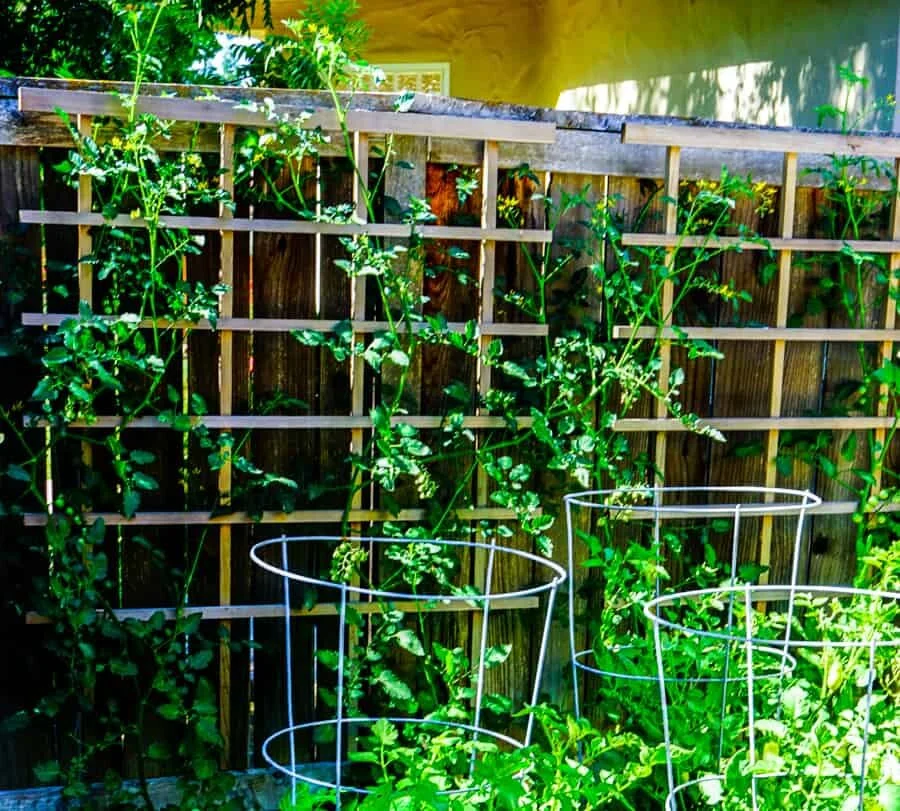How to keep tomato cages from falling over
It’s a huge bummer when your tomato plants fall over. You spend all this time babying and nurturing them only to find that they fall over in their cages during a bad wind or rainstorm.
Choosing the right support for your specific tomato variety and placing it in the ground when you plant your seedling will prevent them from falling.
Do all tomato plants need cages?
Short of the super compact patio varieties, almost all tomatoes will need support. They will get large and heavy enough that they will not be able to support their own weight. In such cases, the tomato plants will grow along the ground, much like a squash plant.
Growing tomatoes along the ground is not ideal, though. The primary reason is that tomatoes grown upright rather than along the ground typically yield larger, more healthy fruit. It keeps the leaves and fruit away from the ground environment, which often contains fungi or animals that can bother and eat the fruit.
Cages are a popular type of support for tomatoes, but there are others such as stakes and trellises. If you’re having problems with cages in your garden, it’s worth looking into other options that might even have laying around the yard.
How do you prevent tomato plants from falling over?
The key to preventing your tomato plants from falling over is by providing them with the proper support from the very beginning.
If you can, try to set up your support system when you plant your seedlings. It may seem ridiculous to put in an 8 foot huge bamboo pole next to a 3 inch plant, but it’s all about preparation here.
Trust me, you’ll be grateful later on in the season when you’re picking healthy and delicious tomatoes from your well supported plants!
Step 1: Figure out your tomato plants’ heights
The first thing to do here is to know whether your tomato plant is either determinate or indeterminate.
Indeterminate are typically vining types of tomatoes and will grow fairly tall.
Determinate types like to grow in bush form, but sometimes get tall as well.
Once you know the tomato’s type, then look up the height for the variety that you’re growing. Each variety grows to a particular height, and this of course will vary based on other environmental factors in your garden (e.g., microclimate, general health of your soil, fertilizing properly, watering, etc.).
Here are approximate heights of popular tomato varieties:
| Tomato Name | Tomato Type | Approximate Height (feet) |
|---|---|---|
| Supersweet 100’s | Indeterminate | 8-12 |
| Sungold | Indeterminate | 8-12 |
| Beefsteak | Indeterminate | 8 |
| Roma | Determinate | 4 |
| Early Girl | Indeterminate | 9 |
| Amish Paste | Indeterminate | 6 |
| Green Zebra | Indeterminate | 5 |
| Stupice | Indeterminate | 5-7 |
| San Marzano | Indeterminate | 6 |
| Better Bush | Determinate | 3-5 |
| Celebrity | Determinate | 3-4 |
| Patio Varieties | Determinate | 2 |
Some of these gals get really big! It’s cool to write down their official heights, but in the midst of the summer tomato season it just seems so normal to have these large plants looming over you in the garden.
Now that you have an idea of the heights, let’s look for the proper support systems.
Step 2: Choose the right support for your tomato’s maximum height
Which support is right for your plant? Always aim for a higher support system. Sometimes it’s difficult to add support later on in the season if you’re dealing with a behemoth plant.
A rule of thumb that has worked for me is that I cage my determinate types and I stake indeterminate (vining) types.
For determinate tomatoes, use the galvanized steel round cages at least 54 inch tall with four legs.
Notice these cages have four rings, and four legs. Perfect for determinates!
There are cages of varying heights, so make sure you buy the taller ones with 4 legs. There are also cages that are square-ish and fancy, but those are just too expensive for me. I can get these cages for under $10 each.
I use 54 inch cages to grow my determinate tomatoes, such as my Romas. I’ve not had any problems with these cages and have had some for at least 5 years.
Those are green romas in there, supported by my 54” galvanized wire cages.
I used to use the 33 inch tall cages (the ones with only three legs) for my Romas and they were just too short. These size, however, are GREAT for peppers! So if you have any lying around, this is the perfect use for them while you go buy bigger cages.
I use them for my bell peppers, thai chili peppers, and okra plants. They’re perfect because pepper plants are relatively a little more sturdy than tomatoes so they just need a little support.
Here’s a solid way to place your tomato cages:
This is the trick: when you buy the cages, the legs will likely be all pushed into the center. This allows the stores to easily stack them, which is probably how you bought it.
It isn't, however, ideal for situating the cage firmly in dirt. When the legs are all pointed inward, the cage lacks central stability. Try it - put the cage in the dirt when the legs are pointed inwards, even just a little. It will be pretty easy to push from either direction.
The key to a really sturdy tomato cage is pull all the legs outwards at about 45 degree angles and then shove it into the dirt at least 6-8 inches, more if you can.
Ready to be put to bed!
Then, if you really want some extra stability, or live in a really windy environment, pound some rebar or fence post inside the cage and fasten it. (Remember to do this all before planting so you don’t injure your roots.)
For indeterminate tomatoes, I like to use huge stakes pounded into the ground at least a foot and tie the tomato plant up as it grows.
Yes it looks crooked here but I promise I fixed it after this picture was taken ;)
And when I say huge, I mean at least 8 feet tall. If we’re losing a foot by banging it into the ground, then we only have 7 feet above ground. Any type of long pole works here, but I’ve just used some cylindrical wood poles you can often find hiding out in the lumber section of your hardware store.
As my tomatoes grow, I use green stretch tape to faster the larger growing branches. Sometimes I will use two side by side and just continually tie the branches up as they grow. This has by far been the more resilient to wind storms, rain storms and the weight of lots of fruit.
I always grow sungolds and sweet 100’s. And, according to the table those get up to heights of 12 feet. That’s pretty accurate because I’ve had years where my cherry tomato plants grow so large that I have to add extra stakes to allow the tops to be supported.
If you foresee this being an issue for you (and by the way, this has to be one of the best “issues” about growing tomatoes) then you could add additional stakes in the area where you think your viners will climb.
Other staking methods for tomatoes
These are just two ways that have been successful with my garden, but I’ve seen beautiful DIY setups with arbors and trellises for vining tomatoes.
Here is a setup with trellises when I had a spot next to a fence for some cherry tomatoes. I just fastened the trellises to the fence, and they acted like a support for my tomato support system. Is that known as support squared? :)
What you choose will ultimately depend on your varieties, your microclimate conditions, and generally what you may have laying around your property. Tomatoes are happy just to be off the ground, so get creative!












